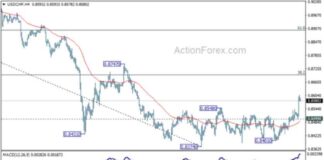Navigating the Latest Crypto Market Downturn – Expert Analysis and Strategies
Market Picture
The cryptocurrency market experienced a significant downturn over the past 24 hours, with total market capitalization dropping to $2.08 trillion from levels near $2.15 trillion. This retreat marked a 2.9% decrease, highlighting the challenges faced by digital assets in recent days. Despite a sense of moderate optimism in traditional equities following the release of inflation data, the demand for cryptocurrencies remained lackluster. This negative performance could potentially signal further outflows from risk assets, particularly as investors brace themselves ahead of the weekend.
Bitcoin, the leading cryptocurrency, saw a notable decline to $58,000, representing a loss of 4.5% within the 24-hour period. The sell-off was triggered by the crossing of the 50- and 200-day moving averages, a technical indicator known as a ‘death cross.’ Historical data suggests that it typically takes around a month for the market to recover from this signal and return to its previous levels of strength.
Similarly, Ethereum retreated to $2,620, experiencing a drop in value. The rally lost momentum as it approached the 61.8% Fibonacci retracement level of the initial decline, raising concerns of a potential $500 pullback in the near future.
News Background
Recent reports from Cointelegraph have shed light on Solana’s price trajectory, suggesting that a more realistic target would be $190 rather than the previously speculated range of $300-$1,000. This adjustment is attributed to the growing competition from Layer 2 solutions for Ethereum and the diminishing hype surrounding meme coins. Analysts have expressed views that Solana may be overvalued compared to Layer 2 tokens for Ethereum.
In a surprising development, former members of the TON Foundation have launched a venture capital firm named TON Ventures, securing an initial investment of $40 million. The project aims to support startups operating on The Open Network (TON), with the TON cryptocurrency experiencing a surge in value, surpassing $7 intraday.
A recent analysis by 10x Research suggests that the increasing issuance of stablecoins could play a crucial role in sustaining Bitcoin’s upward momentum. Tether and Circle, two major stablecoin issuers, injected nearly $2.8 billion worth of assets into the market last week, indicating a renewed interest from institutional investors.
According to SEC filings, investment bank Goldman Sachs and trading firm DRW Holdings have significant stakes in crypto ETFs, with holdings valued at $418.7 million and $238.6 million, respectively. This further underscores the growing institutional involvement in the digital asset space.
Growthepie’s data reveals a notable surge in daily transactions within Ethereum-based Layer 2 solutions, reaching a record 12.5 million transactions. This represents a substantial increase of over 140% since the beginning of the year, with the Coinbase-backed Base blockchain driving much of the growth. However, the number of active addresses in the Layer 2 segment has started to decline, peaking in mid-July.
Token Terminal’s insights indicate that BlackRock, a prominent asset management firm, is gearing up to launch its own blockchain network, which will serve as an analogue to Coinbase’s Layer 2 solution. This move underscores the growing interest from established financial institutions in blockchain technology.
Expert Analysis: Strategies for Navigating the Downturn
As the crypto market grapples with a downturn, experts emphasize the importance of adopting strategic approaches to navigate the volatility. One key recommendation is diversification, spreading investments across a range of assets to mitigate risk exposure. By diversifying your portfolio, you can reduce the impact of market fluctuations on your overall holdings.
Another crucial strategy involves staying informed and conducting thorough research before making investment decisions. Keeping abreast of market trends, regulatory developments, and technological advancements can provide valuable insights that inform your investment choices. Additionally, seeking advice from reputable sources and consulting with financial professionals can help you make informed decisions in a rapidly evolving market.
Risk management is also paramount during periods of market uncertainty. Setting clear investment goals, establishing stop-loss orders, and maintaining a disciplined approach to trading can help mitigate potential losses and protect your capital. By implementing risk management strategies, you can navigate the volatility of the crypto market with greater confidence and resilience.
Regulatory Landscape and Market Sentiment
The regulatory landscape plays a significant role in shaping market sentiment and investor confidence in the cryptocurrency space. Recent regulatory developments, such as increased scrutiny from regulatory authorities and proposed legislation, have sparked uncertainty among market participants. This uncertainty can lead to heightened volatility and price fluctuations as investors react to regulatory news.
Market sentiment, influenced by factors such as macroeconomic trends, geopolitical events, and investor sentiment, can also impact the direction of the crypto market. Positive developments, such as institutional adoption, technological advancements, and market expansion, can bolster investor confidence and drive market growth. Conversely, negative news, regulatory crackdowns, and security breaches can trigger sell-offs and dampen market sentiment.
Navigating the complex interplay between regulatory dynamics and market sentiment requires a nuanced understanding of the factors at play. By staying informed, maintaining a long-term perspective, and adopting a cautious approach, investors can weather market downturns and capitalize on opportunities for growth in the crypto market.
Emerging Trends and Opportunities
Despite the challenges posed by the recent market downturn, several emerging trends and opportunities are reshaping the crypto landscape. DeFi (Decentralized Finance) continues to gain traction, offering innovative financial products and services that empower users to transact, borrow, and earn interest without traditional intermediaries. The growth of DeFi platforms presents new avenues for investors to diversify their portfolios and participate in the decentralized economy.
NFTs (Non-Fungible Tokens) have emerged as a disruptive force in the digital art and collectibles market, enabling creators to tokenize and monetize their work on blockchain networks. The surge in NFT adoption has opened up new revenue streams for artists, musicians, and content creators, while offering investors the opportunity to own unique digital assets with provable scarcity.
The rise of Layer 2 solutions, such as Ethereum’s scaling solutions and blockchain interoperability protocols, addresses the scalability challenges faced by blockchain networks. By enhancing transaction throughput, reducing fees, and improving user experience, Layer 2 solutions pave the way for mainstream adoption of blockchain technology and decentralized applications.
In conclusion, navigating the latest crypto market downturn requires a combination of strategic foresight, risk management, and a deep understanding of market dynamics. By staying informed, diversifying your portfolio, and seizing opportunities presented by emerging trends, investors can position themselves for long-term success in the ever-evolving crypto landscape.

















